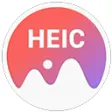Used GeoSetter for Windows?
Editors’ Review
GeoSetter is a free tool for editing digital image metadata, but with a special emphasis on geographical data. It includes a Google Map feature that shows where the picture was taken. Of course, not every image contains geo data, but GeoSetter also edits EXIF and other image data. In fact, it's one of the most capable image data tools we've seen, and the embedded Google Map makes it fun, too.
GeoSetter supports a range of file formats, including JPEG, TIFF, and various RAW files from cameras like Canon, Nikon, and Sony. It uses Phil Harvey's ExifTool to write data accurately into images. One of its key features is the integration with Google Maps. This allows users to view and manually adjust geographic data within the program.
The software is adept at handling data efficiently. It can automatically populate IPTC fields with location data. Users also have the option to manually adjust IPTC data and change the date when the photo was taken. Additionally, GeoSetter can compare your images against GPS track files in formats such as NMEA and GPX.
For those who want to visually track where their photos were taken, the software provides an option to export data to Google Earth. GeoSetter is available in many languages, including English, German, Spanish, and Japanese, making it accessible to a global audience.
GeoSetter's basic interface is divided into two halves. On the left, there are file browser and image preview panes, and on the right is an embedded Google Map. The program also opens with an extensive Settings page, with 10 tabs for configuring File Options, Camera, Startup, ExifTool, and more. We opted for the program's defaults and clicked OK. We simply browsed to a folder or single image, loaded our choices, and clicked each individually to call up its metadata. Double-clicking an image opened its Edit Data page, which offers tabs for editing Location, Source/Description, Categories/Keywords, Contact, Date, and Custom View, which let us select from the other tabs' entries. It took us a while to find an image containing geographical data, which let us try out the map feature. We could also enable the Tracks feature, search the map directly, enter coordinates, and use other Google Maps features. The navigation between directories wasn't as smooth as it might be, though that's a minor quibble. On the plus side, there is an excellent Help file, FAQs, and other assistance.
Bottom Line
If you like to travel, even by armchair, GeoSetter can help you get more out of your snapshots. But even if your images don't contain GPS or other geo data, you can still use GeoSetter to edit virtually any other aspect of an image's data.
What’s new in version 3.5.3
- This version may include unspecified updates, enhancements, or bug fixes.
Explore More
Sponsored
Adobe Photoshop 7.0.1 Update
Freeibis Paint
FreeCanon EOS DIGITAL REBEL XT / EOS 350D DIGITAL Firmware Update
Free
Make It Simple For Sony Vegas Pro for Windows 10
PaidXnConvert
FreeXender - Share Music Transfer
Free
Waltr HEIC Converter
FreeNX Studio
Free
Power.Media.Player for Windows 10
FreeProtoPie
FreeXpiks
FreePhoto Glory
Paid